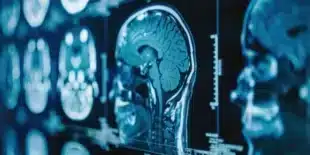In a groundbreaking achievement, scientists have successfully created a mouse using genetic tools that date back to a time before multicellular organisms existed.
The researchers took a gene from single-celled organisms and introduced it into mouse cells to regenerate stem cells. These stem cells were then injected into a developing embryo, resulting in the birth of a living mouse.
Millions of years ago, long before complex, multicellular life forms appeared, single-celled organisms were the dominant life forms on Earth. Some of these organisms, known as choanoflagellates, are considered the closest living relatives to animals.
Recent research has revealed that the genomes of choanoflagellates contain versions of the Sox and POU genes, which play a crucial role in the formation of stem cells in mammals. These genes were previously thought to be unique to animals but were discovered in these single-celled organisms. Scientists used these ancient genes to reprogram mouse cells.
Dr. Alex de Mendoza, one of the study authors, commented that creating a mouse using genetic tools derived from single-celled organisms demonstrates the remarkable continuity of genetic function that has persisted across nearly a billion years of evolution. This discovery suggests that the key genes involved in stem cell formation may have originated much earlier, potentially laying the groundwork for the evolution of multicellular life.
To create the mouse, the choanoflagellate Sox genes were inserted into mouse cells, replacing the existing Sox2 genes. This transformation turned the cells into induced pluripotent stem cells (iPSCs), which have the ability to become any type of cell in the body. When these iPSCs were injected into a mouse embryo, they formed a chimera—an organism with cells from two different sets of DNA.
The resulting mouse exhibited characteristics of both the iPSCs and the donor embryo, including dark eyes and patches of black fur, confirming that the ancient genes had impacted its development. This is particularly remarkable given the simple origins of these genes, showing that early life forms had evolved mechanisms for maintaining pluripotency—something that would later be repurposed in multicellular organisms.
Dr. de Mendoza explained that while choanoflagellates don’t have stem cells, they possess genes that likely regulate basic cellular functions, which multicellular animals later adapted for building complex bodies.
This discovery holds significant potential for the future of regenerative medicine, which heavily relies on stem cells. Dr. Ralf Jauch, another co-author, noted that by studying the ancient origins of these genetic tools, scientists can gain deeper insights into how pluripotency mechanisms can be refined and optimized for future innovations.


